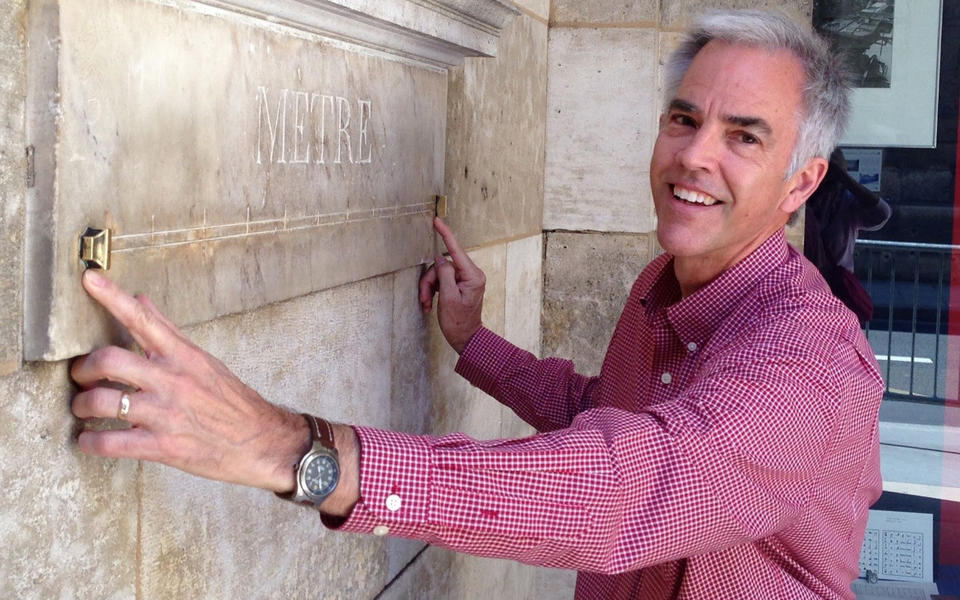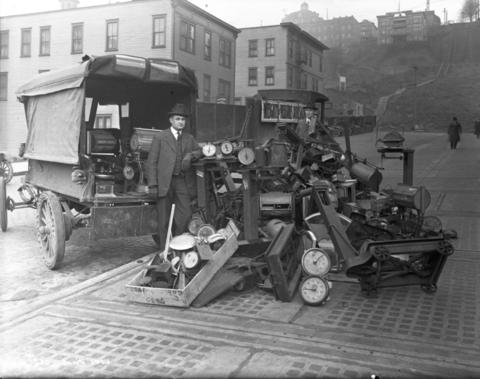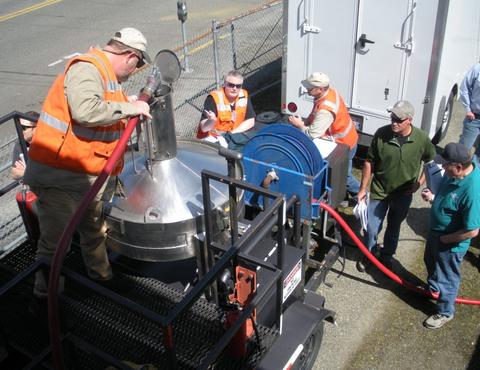Taking Measure
Just a Standard Blog

Between 1796 and 1797 the French Academy of Sciences had 16 standard meters engraved in marble and installed in various places around Paris so they would be directly accessible to the public. The meter here is the only one that survives in its original location, which is right across the street from the Palais du Luxembourg in central Paris.
Even though I have spent my entire professional career at NIST, until a year ago it would never have entered my mind that I would become the chief of the NIST Office of Weights and Measures. I started out on the scientific side of metrology, improving our nation’s standards for calibrating devices that measure pressure, such as barometers, the pressure gauges you use to check your tires, and sphygmomanometers, which are the devices the doctor uses to measure your blood pressure every time you go in for a checkup.
Until recently, I was on a two-year detail assignment at the Bureau International des Poids et Mesures (BIPM) in Sèvres, France, contributing to the international metrology system and enjoying the perks of living in the City of Light. Many of you may know that France played an important role in the creation and adoption of the International System of Units (SI), otherwise known as the metric system, which is what the BIPM was established to oversee.
In January 2017, I took over the position of chief of the Office of Weights and Measures following the retirement of Carol Hockert. Before that, I had my first real exposure to the kinds of work that the office does when I attended meetings of two important stakeholders to the U.S. legal metrology community: the National Conference of Weights and Measures (NCWM) and the International Organization of Legal Metrology (OIML).

The NCWM was actually established by NIST way back in 1905 in order to promote nationwide uniformity of weights and measures for commerce by providing standards for calibrating measuring devices, such as the scale at your grocery store, and training for weights and measures inspectors, the people who go and make sure that those devices are working properly. Although the NCWM is no longer managed by NIST, our staff sit on a number of committees and lend their expertise and technical guidance. Their work helps to make sure that, whenever a new commodity comes on the market, such as hydrogen fuel or pelletized ice cream, the best decisions are made as to how that commodity will be sold (whether by weight or volume, etc.), and how to make the transaction fair for both the consumer and the seller.
OIML has been around since 1955, and it has a worldwide mandate that is similar to the nationwide mission of the NCWM. It develops voluntary standards to harmonize weights and measures among its member countries, which facilitates trade, establishes mutual confidence, and protects consumers. Our staff makes sure the interests of our country are represented so that international markets are open to our manufacturers, and the products we import contain what they claim.

Although the two meetings I attended for NIST provided only a brief snapshot of the field, I could immediately tell how relevant the work of the Office of Weights and Measures was, and how valuable was the expertise of its staff. Indeed, while NIST does all kinds of cutting-edge research in physics, chemistry, engineering, and more, that a lot of people might struggle to wrap their heads around, the work we do with weights and measures is something that just about everyone can understand and appreciate.
I’m very excited to take on this very important role for NIST, to provide national and international leadership in legal metrology. The authority to fix the standards of weights and measures is embedded in the U.S. Constitution and has been reaffirmed in many legislative acts over the years.
My vision for our office is to continue the valuable work we do to promote uniform weights and measures laws and regulations and practices; to facilitate U.S. exports and imports through harmonized or equivalent legal metrology standards; and to promote greater use of the metric system. It is clear that our office will need to promote strategies for using its resources wisely to serve the U.S. weights and measures infrastructure. And as always, we will need to continue to look to the future to anticipate the needs of legal metrology in a changing economy.
About the author
Related Posts
Comments
- Reply





